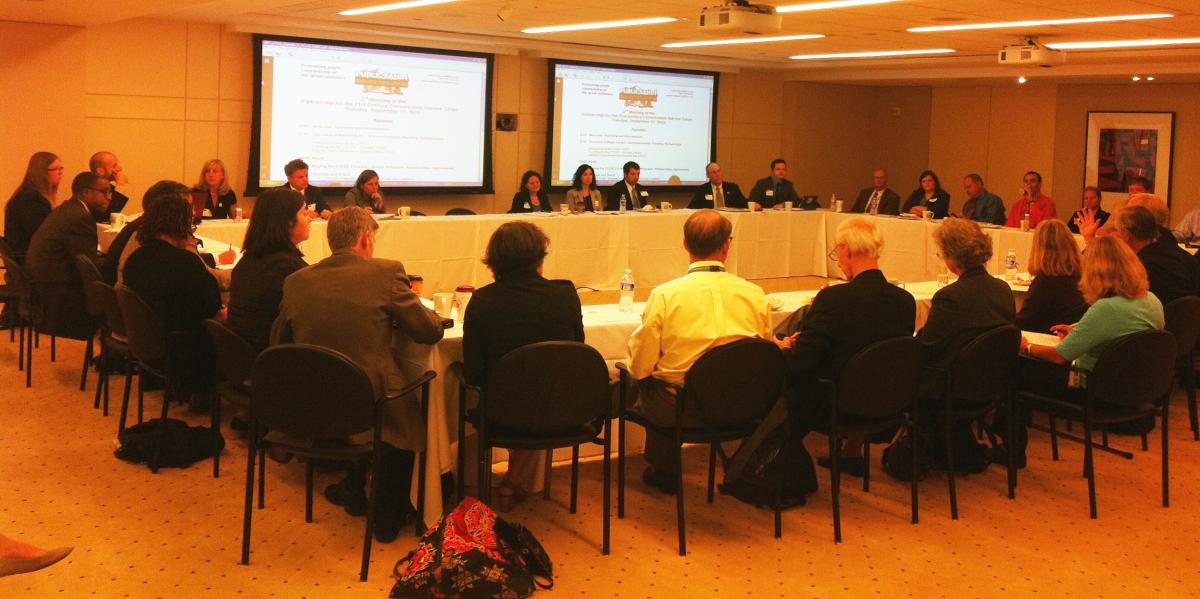
On Tuesday this week, participants in the Partnership for a 21st Century Conservation Service Corps (21CSC) met in Washington, D.C. to discuss the progression of the initiative. While fundamental questions about the logistics and funding of the initiative remain, substantial progress has been made by the Partnership and the National Council (i.e. official representatives from federal agencies) that will soon pave the way for on-the-ground activities.
For instance, it is expected that soon the National Council will release the first list of programs who have been deemed to meet the necessary criteria and principles for participation as a 21CSC program participants. This list and subsequent additions to the list are a necessary precursor to the federal land management agencies issuing guidance to regions and units on how to partner with local and regional 21CSC programs to accomplish select projects.
Among the ideas for raising substantial private funds for the initiative is to market a package of what were described as “projects that endure,” or perhaps something along the lines of “100 Projects to Restore America.” Key representatives from the Aspen Institute’s Franklin Project attended this partnership meeting and the prior meeting, and wanted to express their enthusiasm that the 21CSC could be a substantial cornerstone of their primary goal to elevate voluntary civilian national service as a counterpart to military service in the United States. The nitty-gritty details of identifying projects that “are set apart from projects that Corps are already doing” is something of a dual-edged dynamic, as many people attending the meeting also believed that the initiative needs to be something more deeply “embedded into how the federal agencies work.”
This dynamic more broadly was discussed in the desire to create a launch event for the program with some pow, substantial press, and funded projects. It should be noted, however, that some attendees recognized that while a huge launch would have value, there have actually been a steady progression of events that have moved the initiative forward. Starting from a championed idea, to the creation and input of a Federal Advisory Committee to make that idea into a more functional set of principles and recommendations, to the establishment of a National Council as recommended by the Federal Advisory Committee to implement the initiative, and now the nearly-completed initial request for letters of interest in being listed as an official 21CSC program participants, there is a lot of merit to this perspective. So in other words, a request was voiced to appreciate the long-term progress made to create an enduring initiative, that has taken time to evolve given the complexities of collaboration between numerous federal agencies and partners.
One analogy that seemed to resonate with people in the room was that the 21CSC is a growing tree, where the roots and trunk of the tree are a “broad array of partnerships.”
Beyond generalizations about the big picture of where the initiative stands, several new memorandums of understanding / partnership agreements were detailed, with groups including The Wilderness Society, Backcountry Horsemen, and the Conservation Lands Foundation. A representative of the Federal Interagency Task Force of Outdoor Recreation (FICOR) also detailed some new recommendations that will be made to the agencies on how to better facilitate some of the legal framework issues for implementing the 21CSC collaboratively. Work on new partnership agreements and putting the FICOR recommendations into effect will continue.
Some potential logos for the 21CSC were also briefly presented as well as work by The Corps Network to build a website that will serve as temporary home for information about the 21CSC and approved programs. Finally, numerous accreditation efforts and a national service registry were discussed, as well as how to limit redundancies between these systems and processes.
In summary, the partnership meeting showed that while there are still a lot of finer details to be worked out in terms of how the 21CSC will operate, significant progress continues to be made and enthusiasm for the large potential of this initiative remains strong.





































































